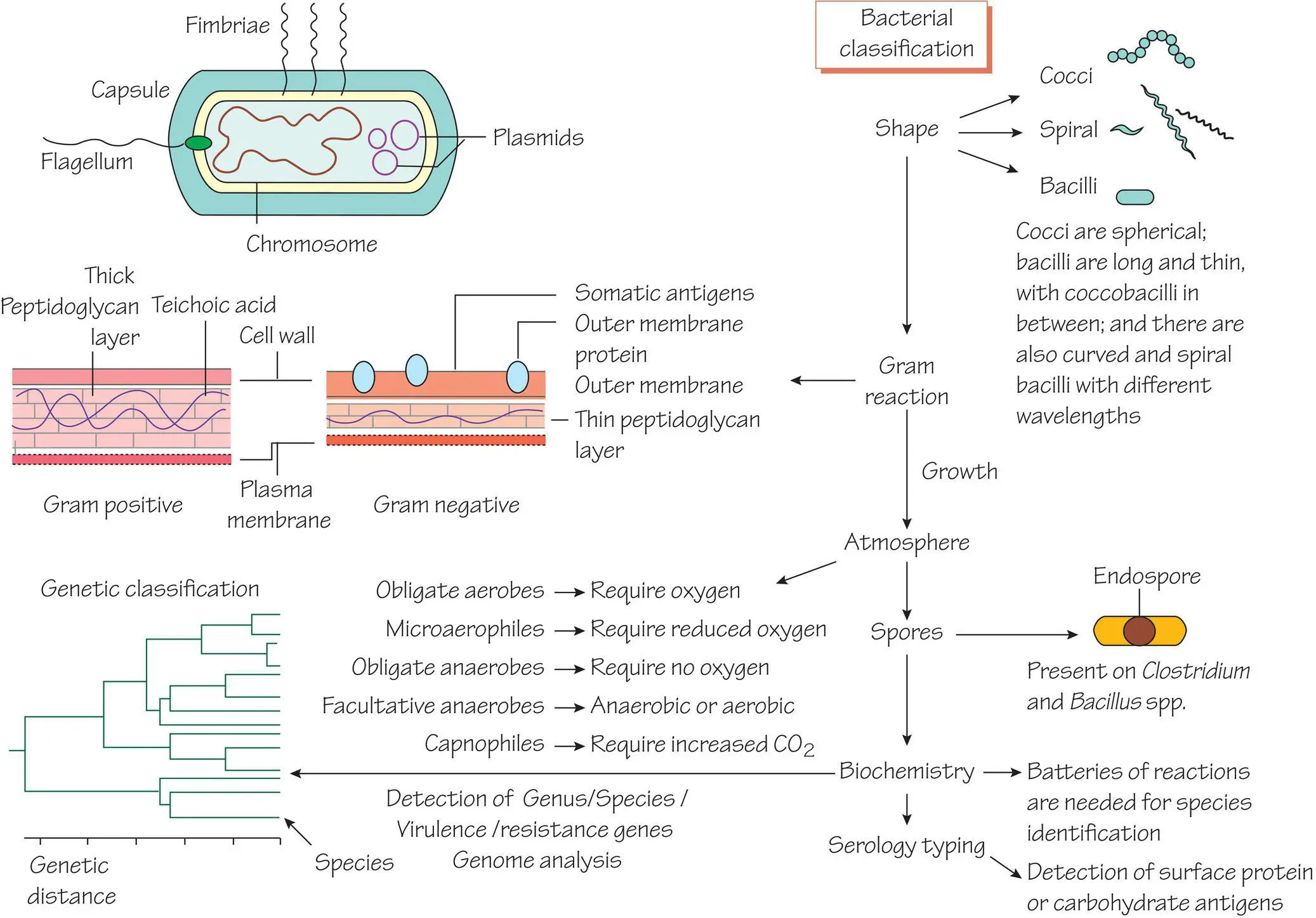Her research interests have included mucosal infection and immunology, epidemiology, healthcare‐associated infection and antimicrobial resistance with publications in each of these areas. She remains committed to improving health by addressing the interactions between humans and the microbial world.
Preface to the fifth edition
Since the publication of the fourth edition, the pace of change in the world of infection has increased. We have seen a global pandemic of a novel pathogen and increasing fears about the risks of antibiotic resistance. These challenges are reflected in the scale of this revision where there has been a comprehensive update to epidemiological, diagnostic and therapeutic components throughout the book. New chapters on innate immunity, antibacterial, antiviral and antifungal therapy, non‐tuberculosis mycobacteria, response to emerging infections, and chronic respiratory infections have been added. The figures have been updated to reflect new information and many new figures created. The availability of information has changed since the first edition of this book was written. This revision was completed during the COVID‐19 pandemic and this event emphasized the importance of infection and infection control to every healthcare worker wherever they practice.
Medical Microbiology and Infection at a Glance , Fifth edition, continues to provide a comprehensive introduction to the topic of human infection and to provide learners at all stages of their clinical life a framework upon which they can build comprehensive knowledge for clinical practice.
Stephen H. Gillespie
Kathleen B. Bamford
About the companion website
This book is accompanied by a companion website:
www.wiley.com/go/gillespie/medical5e 
The website includes:
Interactive self‐assessment case studies.
Revision notes for each chapter.

1 Microbial pathogens, classification and concepts

Humans are at risk of infection by hundreds of different microorganisms: viruses, bacteria, protozoa and helminths. Understanding their biology helps us to diagnose them, classify them, to better predict their behaviour in our patients.
Characteristics of bacteria
Describing the components of bacteria is important to help us understand how they cause disease and how we can inhibit them with antibiotics. Unlike eukaryotic cells the bacterial cell wall is rigid, to protect the organism from environmental stress. Some have a thick peptidoglycan layer and cell membrane that stains blue with Gram stain, and others have three layers: inner and outer membranes, and a thinner peptidoglycan layer staining pink with Gram stain. Mycobacterial cells have a high proportion of lipid, including immunoreactive antigens and there are bacteria whose cell wall forms a spiral shape. Some require specialist stains.
Bacterial structural components
Capsule: a polysaccharide layer that protects the cell from phagocytosis and desiccation.
Slime: polysaccharide material secreted on the surface protecting organisms against immune attack and antibiotic action. It is formed when growing in a biofilm, which may occur on medical devices such as canulae, or in lungs damaged by bronchiectasis.
Lipopolysaccharide: surface antigens that strongly stimulate inflammation and protect Gram‐negative bacteria from complement‐mediated lysis.
Fimbriae or pili: specialized thin projections aiding adhesion to host cells. Escherichia coli, which causes urinary tract infections, binds to mannose receptors on ureteric epithelial cells via P fimbriae. Fimbriae are often immunogenic, varying between strains allowing repeated infections to occur (e.g. Neisseria gonorrhoeae).
Flagella: a motility organelle that allows organisms to move to sources of nutrition and penetrate the host mucus. The number and position of flagella may help identification.
Spores: metabolically inert bacterial forms adapted for long‐term survival in the environment, which are able to regrow under suitable conditions.
Genetics: Bacteria have a single chromosome and lack a nucleus (prokaryotes). The DNA is coiled and supercoiled by the DNA gyrase enzyme system (see Chapter 7) and bacterial ribosomes differ from eukaryotic examples. Both of these features are targets for antibacterial therapy (see Chapter 7). Bacteria have accessory DNA in the form of plasmids, integrons, transposons and bacteriophages that can transmit antimicrobial resistance (see Chapter 9) and encode for pathogenicity factors.
Bacteria are divided into genera and species based on the sequence of their DNA. Complex computer algorithms are used to compute genomic information allowing comparison between genera, species and strains. Using these techniques, it is possible to track transmission of individual bacterial strains (see Chapter 11).
Gram reaction:Gram‐positive and Gram‐negative bacteria respond to different antibiotics. Other bacteria (e.g. mycobacteria) may require special staining techniques.
Cell shape: Bacteria may be shaped as cocci, bacilli or spirals.
Endospore: The presence, shape and position of the endospore within the bacterial cell are noted.
Fastidiousness: Certain bacteria have specific O2/CO2 requirements, need special media or grow only intracellularly.
Key enzymes: Presence or absence of certain enzymes, for example, lack of lactose fermentation helps distinguish salmonellae from E. coli.
Serological reactions: Interaction of antibodies with surface structures may for example help to distinguish subtypes of salmonellae, Haemophilus and meningococcus.
DNA sequences: DNA sequencing of key genes (e.g., 16S ribosomal RNA or DNA gyrase) can identify the organism precisely.
Medically important groups of bacteria
Gram‐positive cocciare divided into two main groups: the staphylococci (catalase‐positive), the major pathogen being S. aureus ; and the streptococci (catalase‐negative), the major pathogens being Streptococcus pyogenes , which causes sore throat and rheumatic fever, and S. agalactiae , which causes neonatal meningitis and pneumonia (see Chapters 18and 19).
Gram‐negative cocciinclude the pathogens N. meningitidis , an important cause of meningitis and septicaemia, and N. gonorrhoeae , the agent of urethritis (gonorrhoea).
Gram‐negative coccobacilliinclude the respiratory pathogens Haemophilus and Bordetella and zoonotic agents, such as Brucella and Pasteurella (see Chapter 27).
Gram‐positive bacilliare divided into sporing and non‐sporing. The sporing types are subdivided into those that are aerobic ( Bacillus ; see Chapter 16) and those that are anaerobic ( Clostridium ; see Chapter 24). Pathogens include Bacillus anthracis , which causes anthrax; and clostridia, which cause pseudomembranous colitis, tetanus and, more rarely, gas gangrene and botulism. The non‐sporing pathogens include Listeria and corynebacteria (see Chapter 20).
Читать дальше













